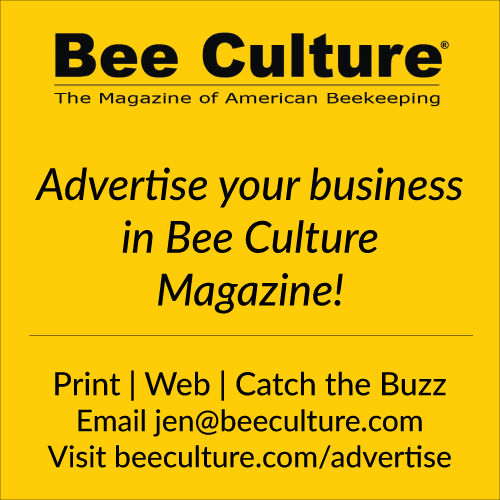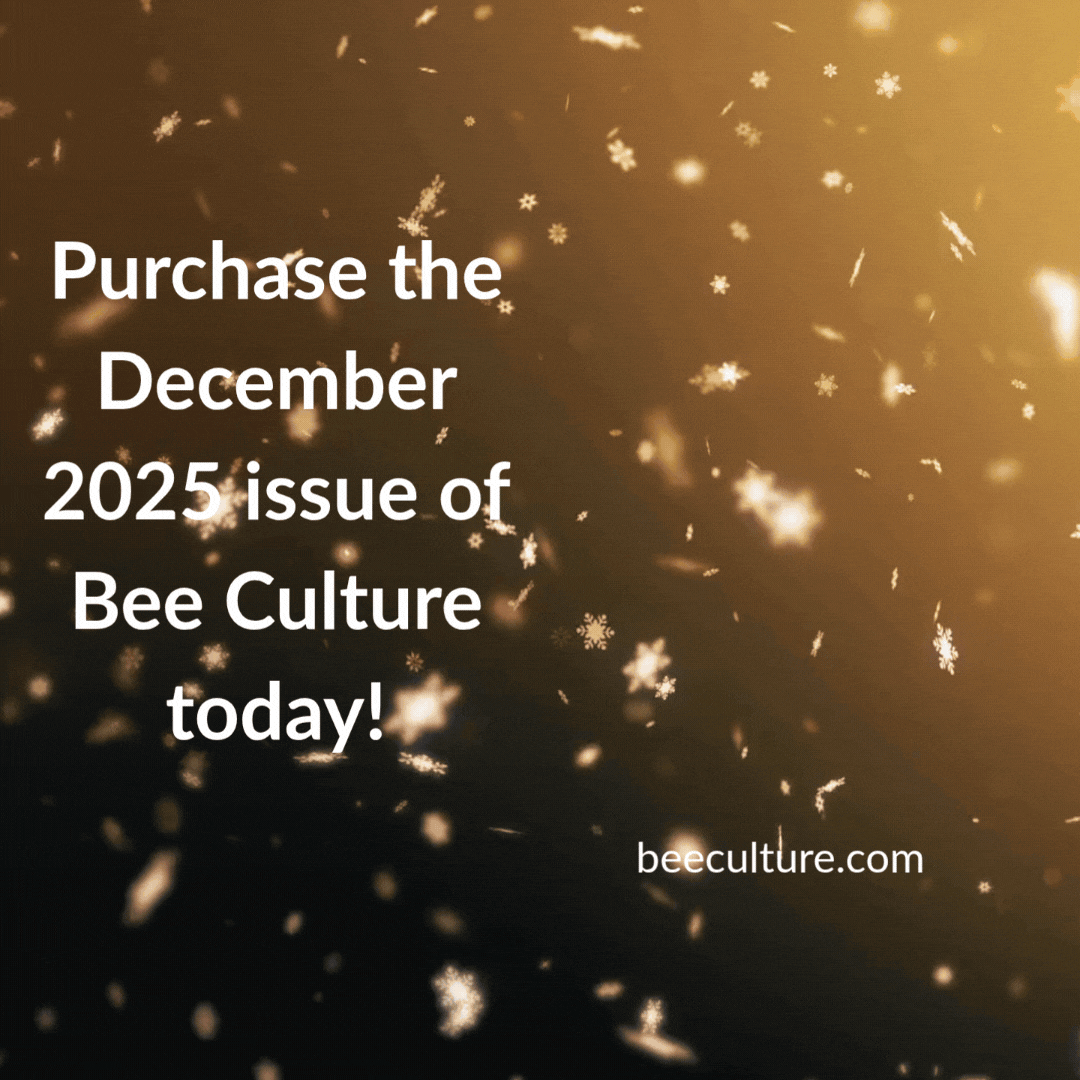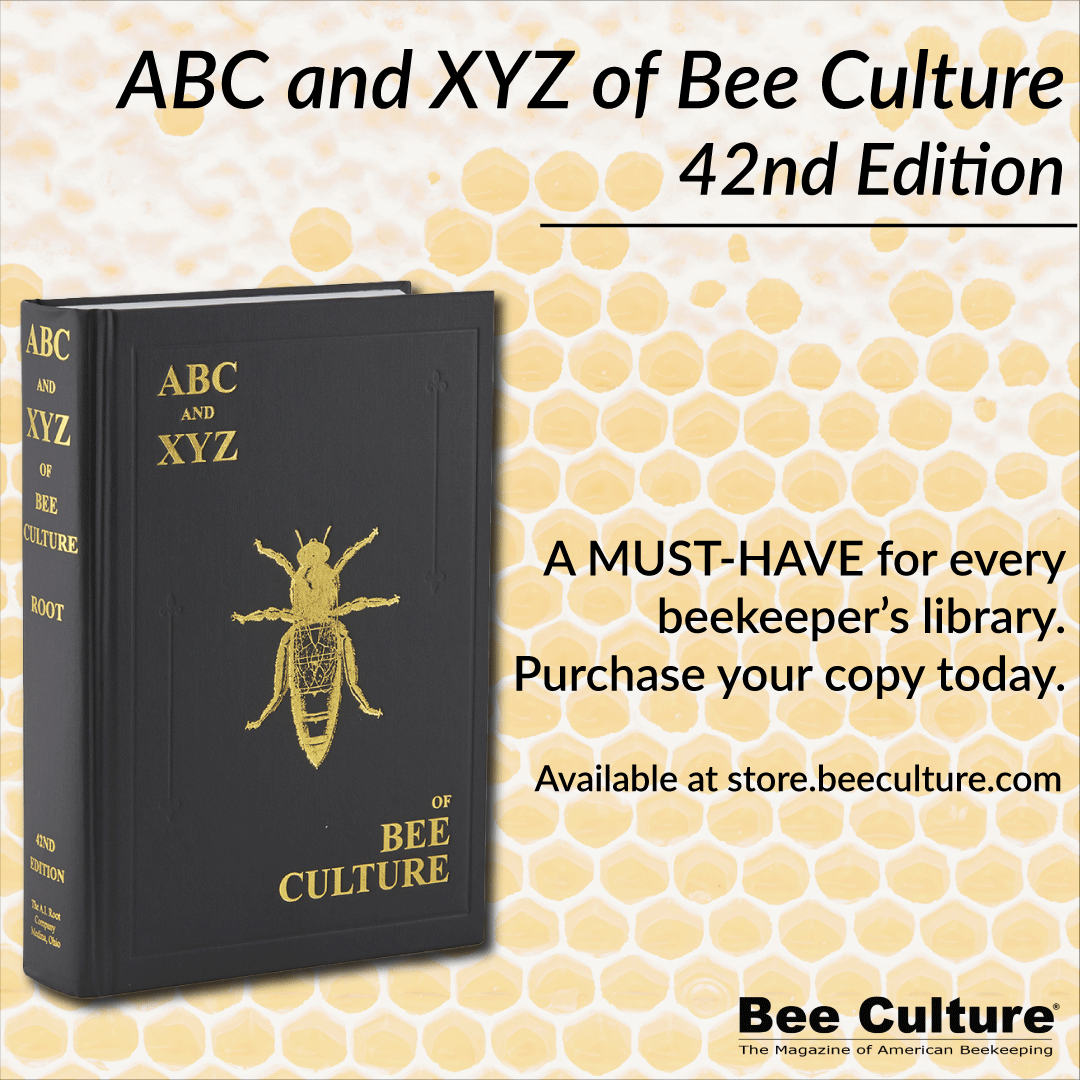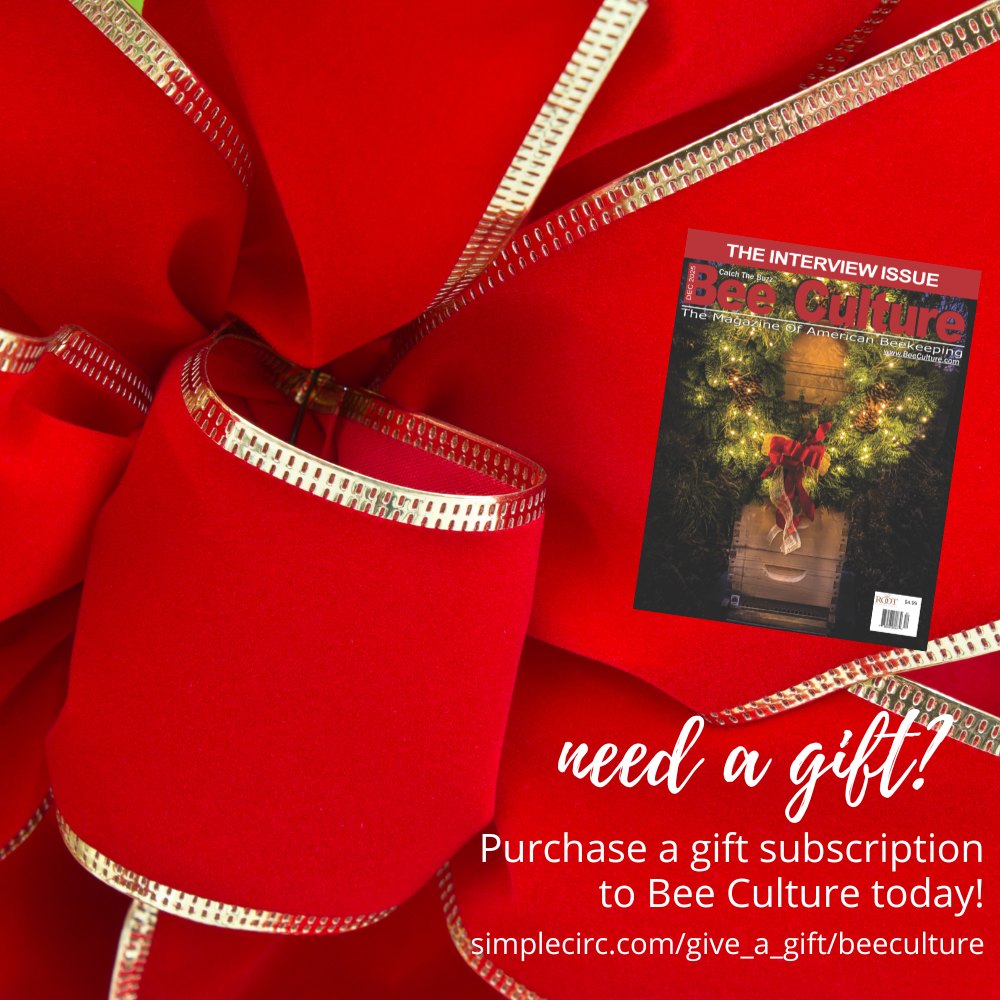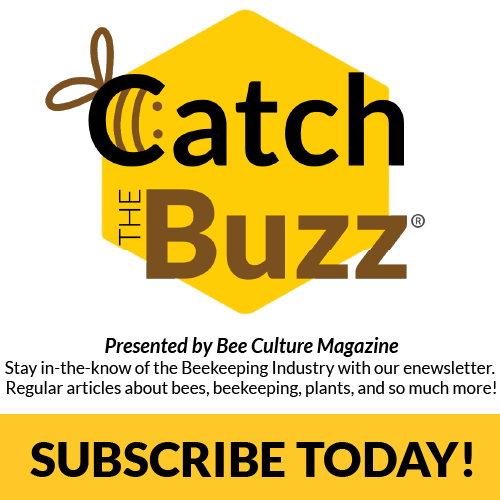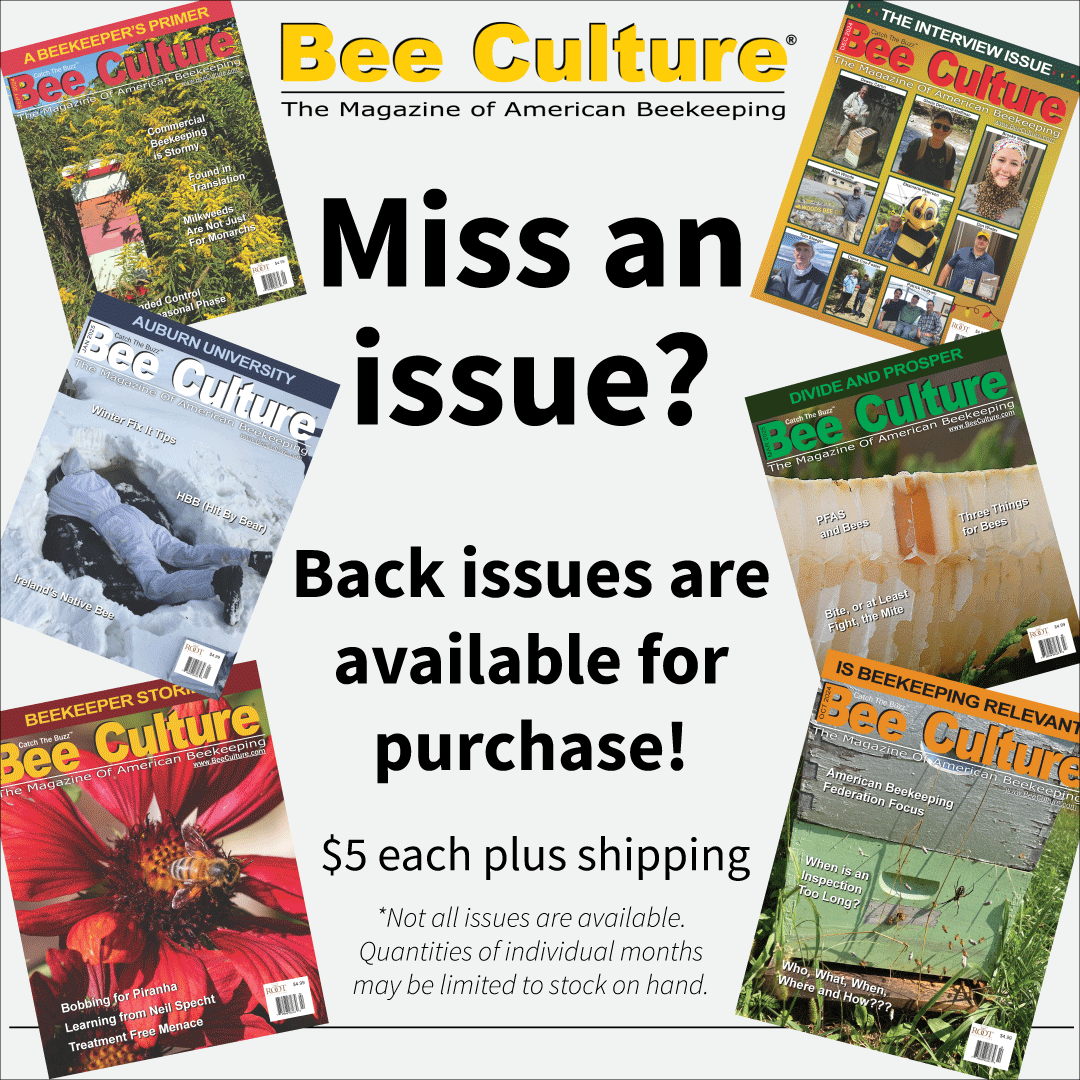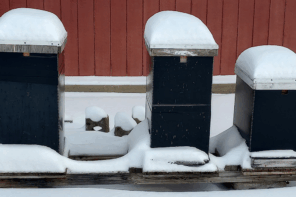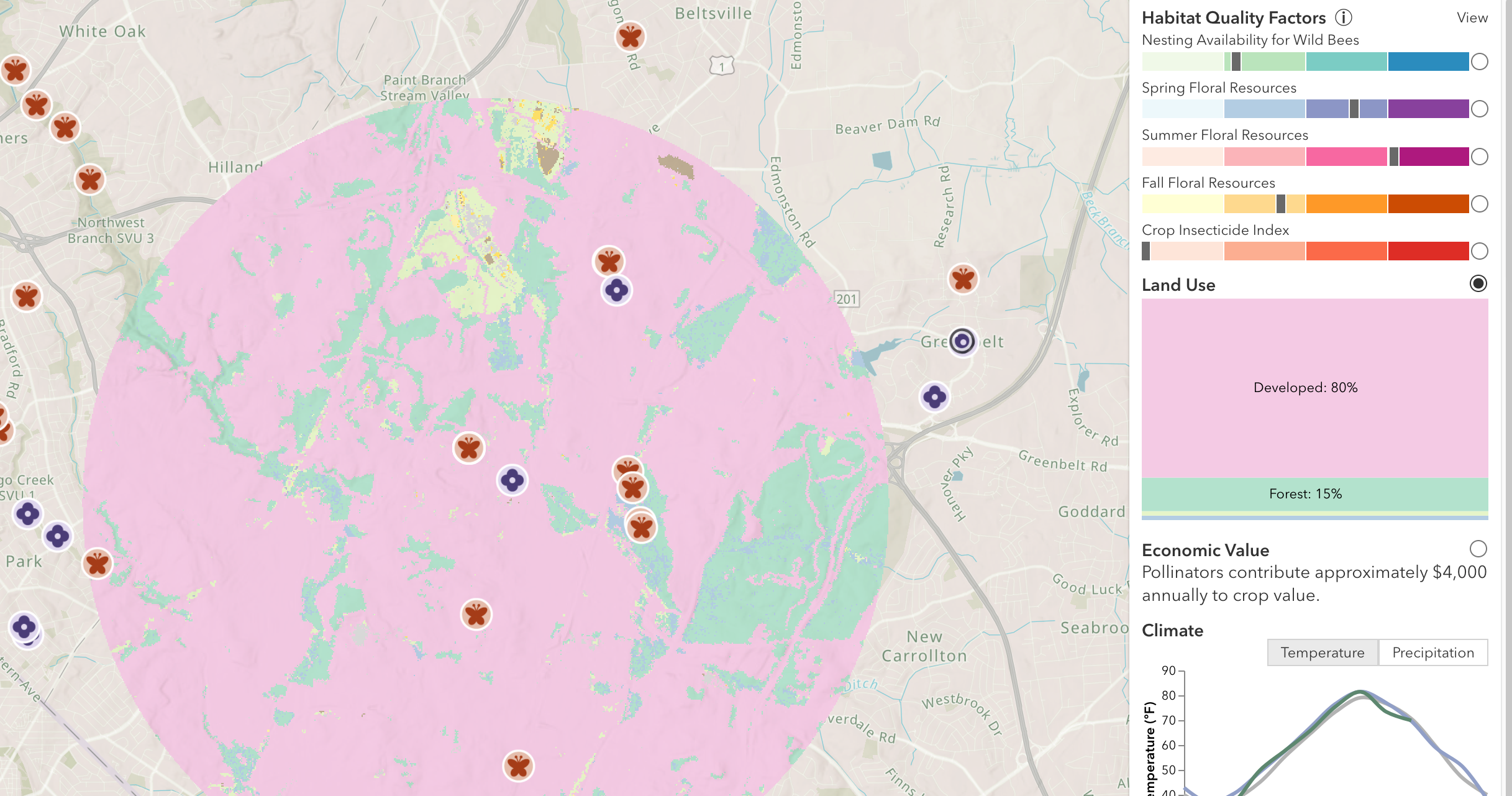By: Ross Conrad
This article originally appeared in the Spring 2019 issue of BEEKeeping Your First Three Years
The end of Winter and early Spring is the most challenging time for a honey bee colony. Food supplies tend to be running out and the bee population is often at the lowest point of the year. Meanwhile temperatures (especially in Northern regions) are typically too cold for the bees to be able to forage effectively. The cool temperatures also mean that precious hive resources can be easily used up keeping the brood nest warm. Even on those days when the weather warms up enough to make foraging possible, there are no flowers available to forage on early on. As a result, this is the time of year when colonies tend to be most vulnerable to starvation. Experience in New England has proven that if the bees don’t have the equivalent of at least two to three deep frames full of capped honey located next to the cluster, the bees are at risk.
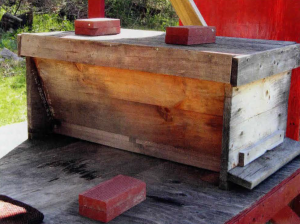
Using an entrance reducer to cut down the size of the hive entrance as shown on this top bar hive, goes a long way in helping to prevent robbing in the bee yard.
A helping hand
The easiest way to assist a colony facing starvation in late Winter is to move frames of capped honey from the outside edges of the hive over so that they are next to the cluster of hungry bees. It is important that the honey to be within the clustering bees’ reach, but does not break up the cluster by positioning a frame of capped honey in the middle of the brood area. Doing so will break up the brood nest and make it more difficult for the colony to maintain optimum brood temperatures and threaten brood viability.
The next best way to assist a colony near starvation is to add some frames of honey to the hive. Some beekeepers will keep spare frames of capped honey in their freezer for just such a purpose. Others will use honey left behind in a neighboring hive that has already expired. While it is critical that additional frames of honey always be placed directly adjacent to, or above the cluster so that the bees can reach the food source easily, it is also important that the colony from where the honey is taken is a healthy. If the donor colony is not free of disease, pathogens could end up being fed to the bees sealing their fate.
Syrup feeding
Frames of honey are not always going to be available and in those cases, sugar syrup is the next best thing to use as feed. Fairly inexpensive and readily available, the feeding of syrup will take more time and labor than feeding frames of honey.
It is a common recommendation to feed bees a syrup made of one part sugar to one part sugar at this time of year in order to stimulate brood production. However, since we are feeding the colony because it is experiencing nutritional stress, it is a better idea to get as much food into the hive as quickly as possible and therefore, use syrup that is around two parts sugar to one part water. An easy way to do this is to simply fill the feeder with sugar and note where it comes up to in the feeder. Then add warm water and mix to dissolve the sugar until the syrup level is back to same level that the dried sugar was filled to.
Consider the sugar type
During the coldest part of Winter, feeding fondant is preferred so as to introduce a minimum of moisture into the hive. By late Winter and early Spring however, syrup can be used and is preferred since the bees can store it in the comb. When choosing what type of sugar to use to make syrup, consider only using cane sugar to feed your bees. About 90 percent of all non-cane sugar is manufactured from sugar beets that are genetically engineered to produce a toxic pesticide in every cell of the plant. By sticking to cane sugar, you eliminate adding these toxins into your colony’s diet and remove any potential impact that they might have on the bees. Do not use brown sugar. White sugar has all the constituents indigestible to the bees removed and therefore will not aggravate elimination issues that may arise when the bees are cooped up in the hive for long periods of time due to cold weather and are unable to go on cleansing flights.
When there are many colonies to feed, there is a strong temptation to feed high fructose corn syrup. Pre-made syrup can be less expensive than granulated sugar, and will save on the labor of converting granulated sugar into syrup. Be forewarned, HFCS contains sugars mildly toxic to bees. Additionally, if the corn syrup has been exposed to high temperatures (such as sitting in a tanker truck in the sun for an extended period of time) an additional toxic compound, Hydroxymethylfurfural (HMF) is produced that is also toxic to bees and therefore caution is advised.
White sugar is pure carbohydrate with all the enzymes, vitamins and minerals removed. As a result, some beekeepers take the advice of the father of biodynamic agriculture, Rudolph Steiner, and add a pinch of natural sea salt to the sugar and replace some of the water used to dissolve the sugar with tea made from thyme or chamomile. This is a way to add back some of those micro-nutrients and make the sugar syrup a bit more like real nectar and hopefully, healthier for the bees.
Feed stimulants
Since white sugar is pure carbohydrate and has had all the micro nutrient that were originally in the sugar cane removed, it lacks a significant odor. For this reason, a feed stimulant is often used to encourage faster uptake of the syrup by the colony. The most commonly used feeding stimulants sold by various companies nationally are composed of a mixture of emulsified lemongrass and spearmint essential oils that impart a strong and inviting smell to the sugar syrup in order to grab the colony’s attention. These essential oils have powerful antimicrobial properties that will not only help prevent mold from growing in the syrup, but have also been associated with reducing colony diseases and helping to improve colony health.
When to stop feeding
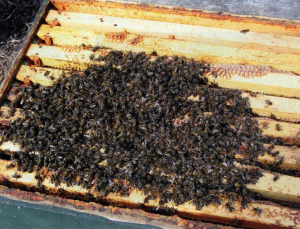
A large cluster of dead bees with no honey in the hive in early Spring (as pictured here) indicates that the bees were healthy but did not have enough food to survive the Winter dearth.
Spring feeding should continue until the first major honey flow begins. In most northern regions the honey flow will tend to coincide with the dandelion bloom, but this may differ in southern or western areas. If for some reason you do not see the flowers in bloom, the bees will let you know that the honey flow has started as they will greatly reduce – or even stop – feeding at the feeder in preference for foraging on the fresh nectar and pollen that has become available.
In all cases, feeding must stop prior to placing honey supers on the hive that are intended for harvesting. To continue to feed a colony when honey supers are in place will compromise the integrity of the honey harvest and detract from the natural flavor and quality of the honey that is produced by the bees from nectar.
Entrance Reducers
If the colony has come through Winter with only a few frames of bees, it is a good idea to remove the extra supers that are on the hive and not occupied by the bees. The size of the entrance to the hive should also be reduced at this time. This advice is especially important when feeding bees and essential when using a strong smelling feed stimulant. The smell of the syrup is likely to attract the attention of other bees in the area and can trigger a robbing event if the entrance is not reduced. Colonies that are victims of robbing can be severely weakened as bees die defending their hive, and in extreme cases, colonies can be robbed out so badly they starve to death.
Another important way to reduce robbing is to be sure not to spill bee feed in the bee yard. This is especially important when using an essential oil feed stimulant that imparts a strong scent to the feed.
By staying on top of your bee’s dietary needs at this critical time of year, you help to ensure that the colonies in your care survive the Winter well, instead of starving right before Spring arrives.

